Installation of steel pipes:
- diameter 168 mm for water installation
- diameter 323 mm for sewerage
The machine used for making installation: MAX K180S.
The installation was made at a 4 metres of depth. The problem was the occurrence of groundwater on this depth. The MAX K180S almost all time was working underwater.
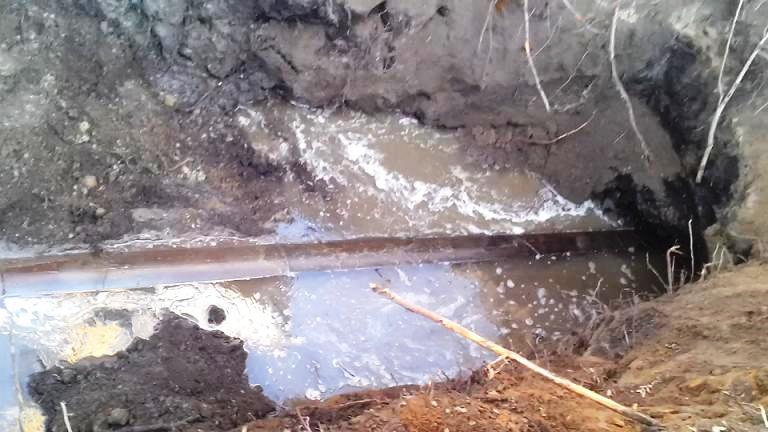
The steel pipe diameter 323 mm before starting installation. The water inside the Start Pit made a little difficult this project.
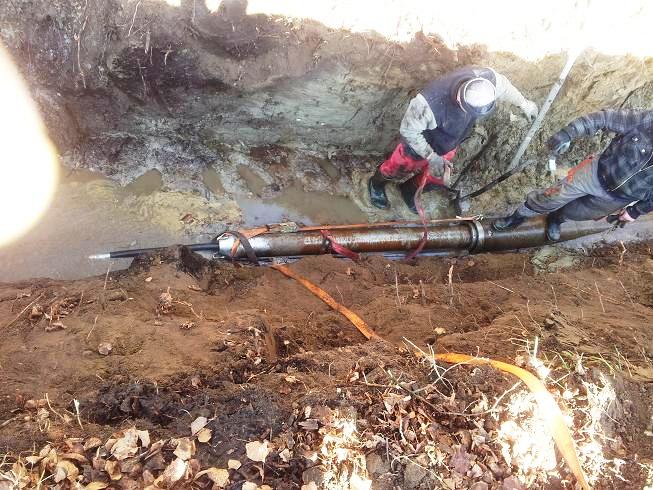
Mounting the mole on the pipe Ø323 mm, using a cone for installing steel pipes and fastening belts. MAX K180S mole can be used for steel pipes diameter 406 mm.
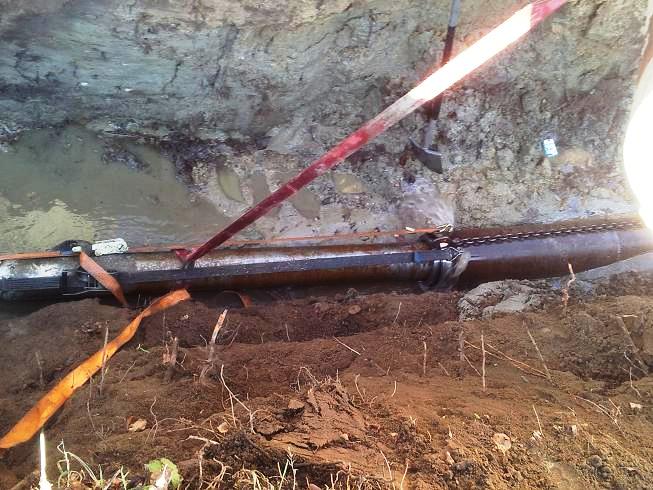
The excavator's arm was helpful for hold the pipe/mole during installation, before the pipe was completely pluged in the ground.
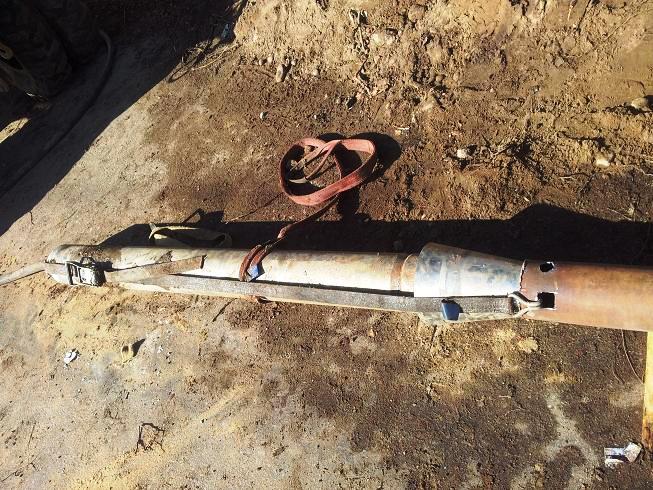
The next step was installation of steel pipe diameter 168 mm. We should be careful, because the MAX K180S has the huge impact energy, more than 1000 J. How big is this energy? It's like if we were dropping a weight of 50 kg from a height of 2 meters. One stroke of the machine has such energy.
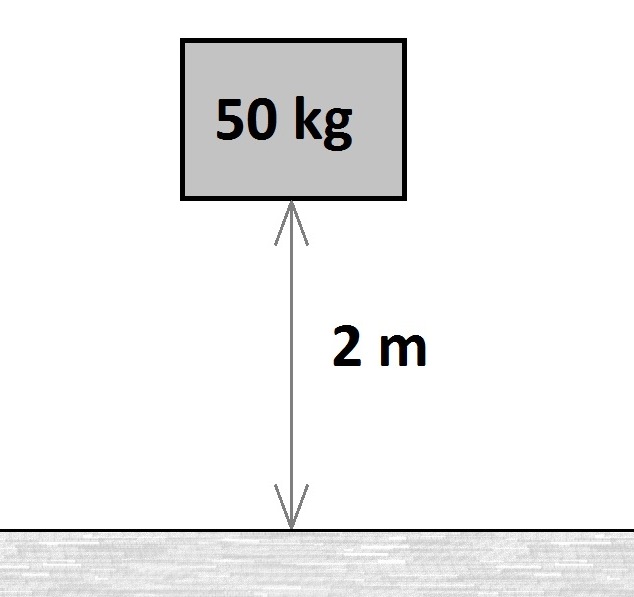
During installation of steel pipes with smaller diameters and with a smaller wall thickness, the pipe can be bursted in the connection with the mole. On the photo below we can see cutted off the damaged fragment of the pipe.
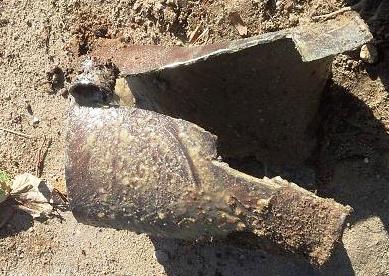
The installation was making in the conditions as on the picture below.
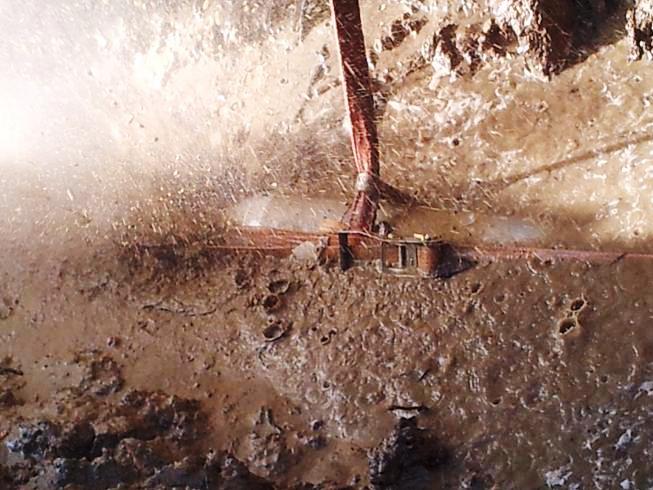
This is not a problem for our machines. The MAX K180S has a special exhaust walve (the ORANGE element marked below).
During impact, it is in the closed position.
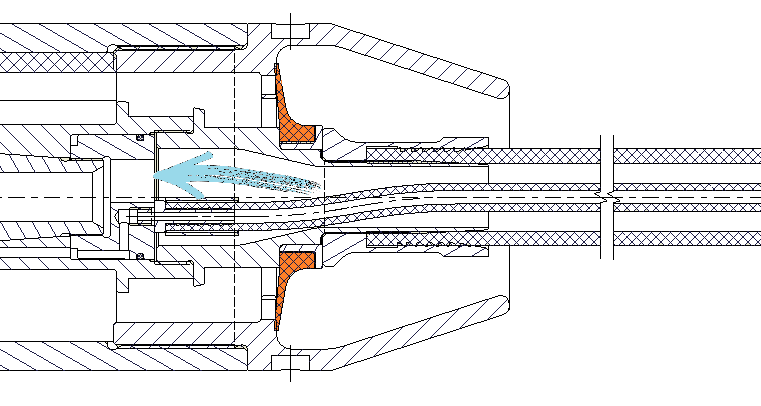
It opens when the air exits the machine
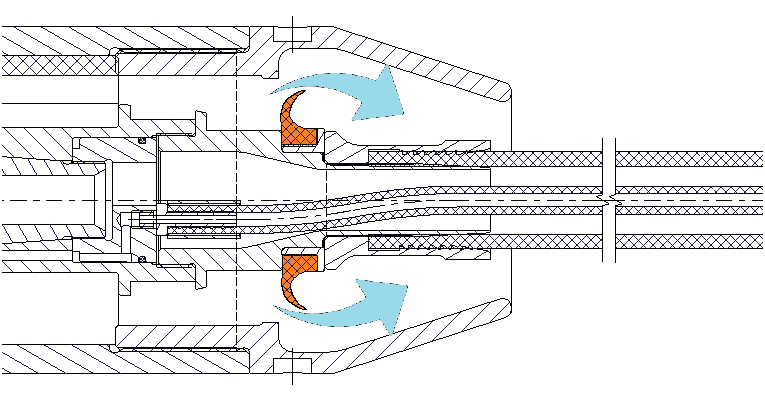
This solution don't protect in 100% the internal machine elements against mud/sand/water penetration inside the mole. That is why the best solution in Ground rockets construction/technology are using removable sliding and sealing elements. Just this removable elements are wearing out during the friction of moving elements inside the mole and taking over the consequences of dirt inside mole. In machines without replaceable elements, the steel elements: especially cylinder and piston, constantly rubbing for themselves and it makes the irreparably damaged.
Up to now the discussion between constructors and users continues about using the exhausting walve in moles and question is open: Is the best solution to using exhausting valve in the mole? Theoretically YES. But the fact is that this solution don't protect the machine in 100%. Some of the impurities will penetrate inside the machine regardless of having this valve. The 7 atm pressure of air required for working Ground rockets, mixed with EkoMAX, is enough for self-cleaning the mole inside. And the exhausting walve interferes with this, partially blocks the airflow in the machine.
Diameter of pipes: 168 and 323 mm
The depth: about 4 meters
Time: total about 4 hours
BACK |  Search
Search  Page map
Page map  E-mail
E-mail  Privacy policy
Privacy policy  Privacy policy |
Privacy policy | 




 back
back











